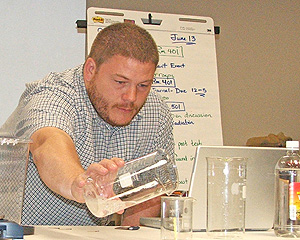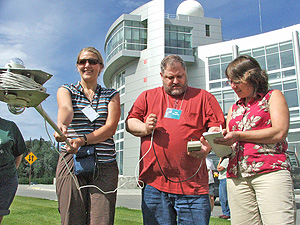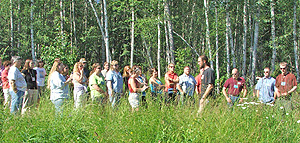International Polar Year scientists instruct teachers on global climate change
International Polar Year scientists instruct teachers on global climate change
Submitted by Amy Hartley
Phone: (907) 474-5823
07/13/07



Teachers from around Alaska are learning about climate changes affecting the world during two summer institutes hosted by the Geophysical Institute of the University of Alaska Fairbanks. A grant from the Alaska Department of Education and Early Development funds the training for K-12 teachers as part of the Geophysical Institute’s Science Teacher Education Program.
Two 2-week STEP Summer Institutes are timed to coincide with the International Polar Year, when scientists from around the world are examining a wide range of physical, biological, and social research topics in the Arctic and Antarctic. Session I began this week and continues through July 20. Session II takes place July 23 through August 3. The 60 teachers participating (30 in each session) earn six upper level credits for participation.
Because global climate change is a broad topic involving many facets, seven UAF scientists from a variety of disciplines are involved in training STEP teachers about the role the atmosphere, the world’s oceans, and land surface play in Earth’s changing climate.
Alaska Science Consortium instructors help teachers translate information learned from scientists into hands-on science lessons useable in their K-12 classrooms. All lessons developed by teachers align instruction and assessment with Alaska science Grade Level Expectations. After field-testing, these lessons will be posted to the STEP Web site and made available to all teachers in Alaska.
The International Polar Year is a worldwide effort to conduct intense research on Earth’s polar regions. In addition to scientific research, there is a strong outreach component that aims to energize youth about science.
Note to editors: Photos are available upon request.
ON THE WEB:
http://www.gi.alaska.edu/STEP/
http://www.uaf.edu/ipy/
CONTACT: STEP director Kathy Bertram at (907) 474-7798. Geophysical Institute information officer Amy Hartley at (907) 474-5823.


